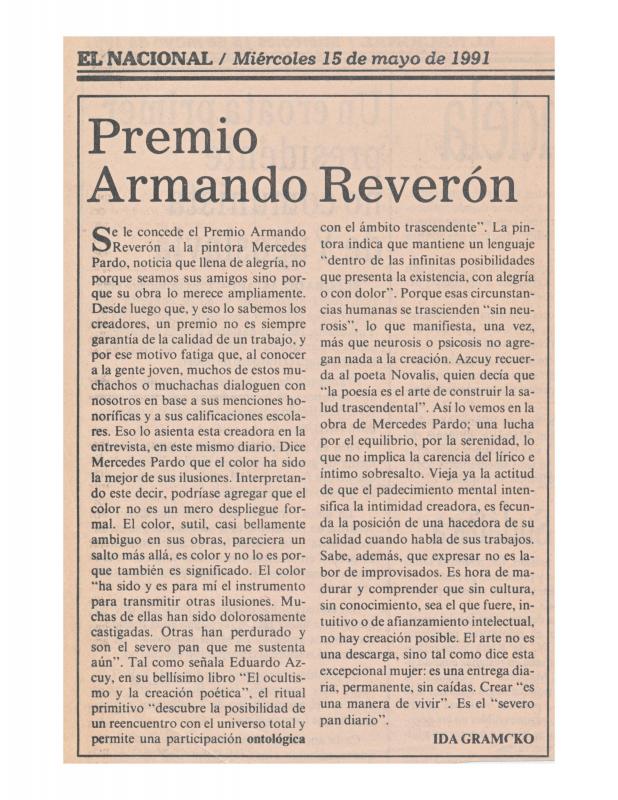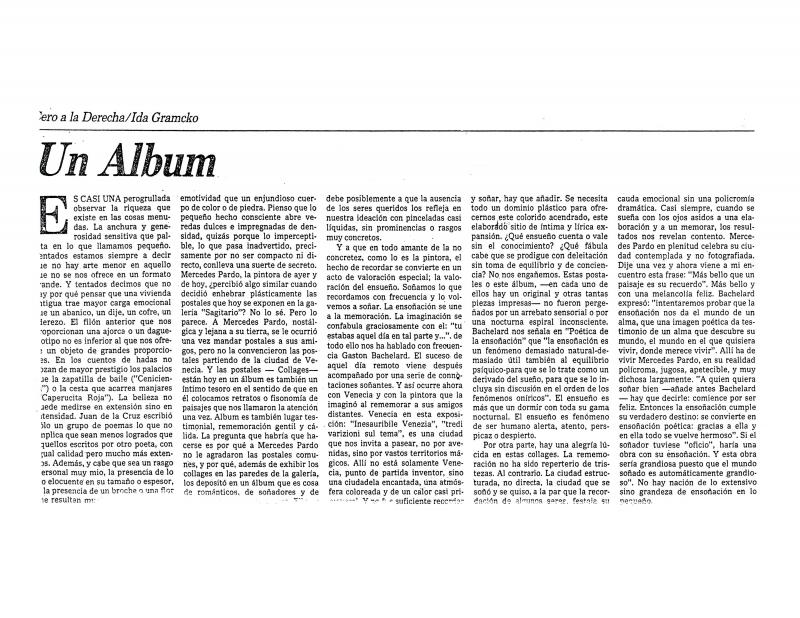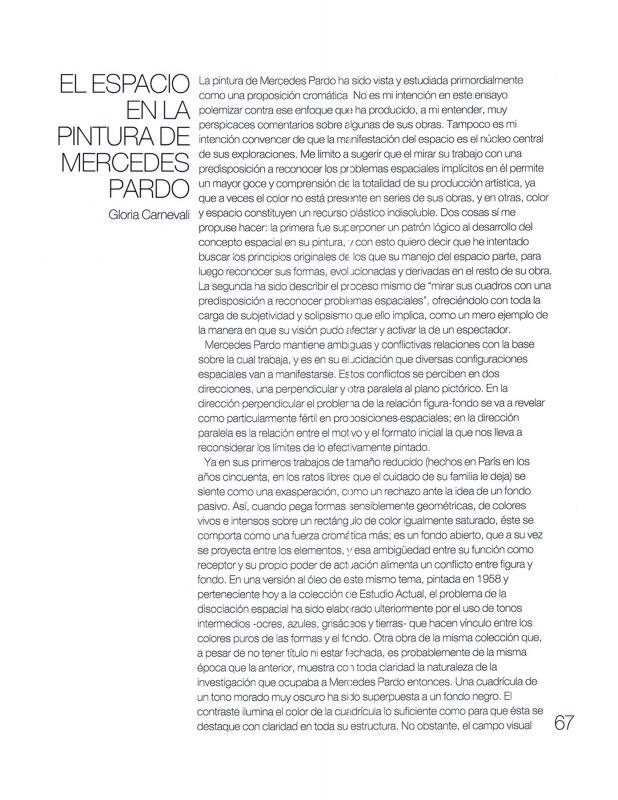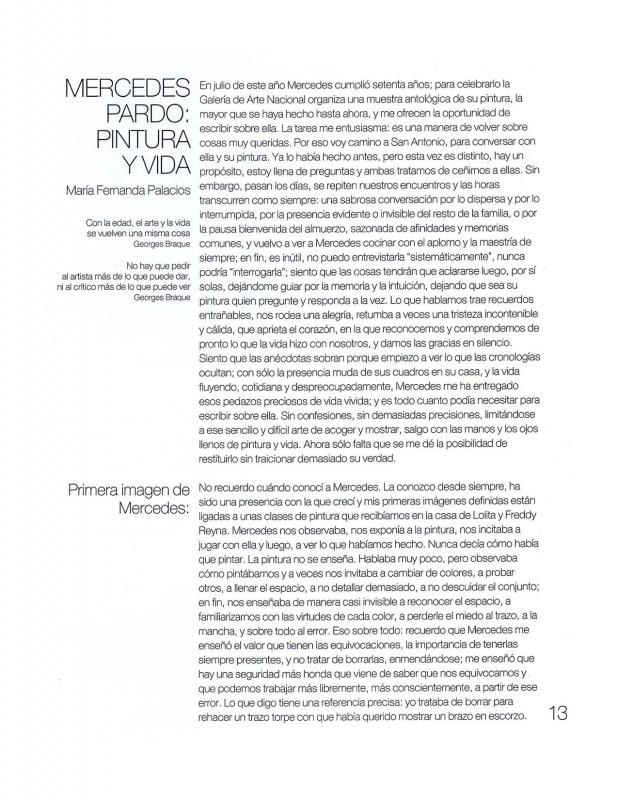Ida Gramcko (1924–1994), a remarkable example of Venezuelan literature and journalism, discusses the work of Mercedes Pardo (1921–2005), one of the pioneers of abstraction in her country and, incidentally, her friend. The author contributed to Pardo’s literature during different periods of her practice. This time, she focuses the opening of Obras recientes de Mercedes Pardo, on view between December 6 and December 20, 1970, at Fundación Eugenio Mendoza. The Fundación Mendoza became a solid institution operating as a hub for exhibitions and cultural debate in Caracas since inception in 1956. Sala Mendoza had already exhibited Pardo’s work in 1964, by means of her series of Signes (variations of the zodiac signs created through ink prints of ordinary household objects and published in twelve books).
Gramcko reflects on collectivity and individuality in art. She presents Hellenistic and Gothic art as examples of how even artists (who conformed to specific styles) managed to preserve their individualities. Collectivity, according to her, consists of individuals, so that the preservation of individuality is of utmost importance for “creators.” Pardo is said to have tried to escape the “historical conscience” of her time (1970 Venezuela) to preserve that innermost trait in her work. The author exemplifies contemporaneity as a transitory and conflictive timeframe lacking a fixed set of characteristics. Moreover, Gramcko does find that “hope” represents the central theme in national cultural expressions, and mentions—as media—the “kinetic,” the “lyrical abstract,” and the “neo-figurative” aspects of that artistic hope that become good examples of contemporaneity. She associates Pardo’s brush to the scalpel of a surgeon that “perforates the emotional experience,” and there lies the artist’s individuality. While most of the literature on Pardo is centered around chromaticism, Gramko’s is an unusual approach to her artistic purpose, so that the author does not engage with any artworks or any specific formal elements. Her focus here is on understanding the philosophy that animates Pardo’s art.
Gramcko contributes to the literature on Pardo by highlighting the transcendental nature of her work in other texts, too. See, in the ICAA Digital Archive, Ida Gramcko, “Premio Armando Reverón” (doc. no. 1331139); and “Un álbum (doc. no. 1325250). For more detail on her art as shown in her 1991 retrospective Moradas del Color, see Gloria Carnevali, “El Espacio en la pintura de Mercedes Pardo” (doc. no. 1102285); and María Fernanda Palacios, “Pintura y vida” (doc. no. 1102253).




